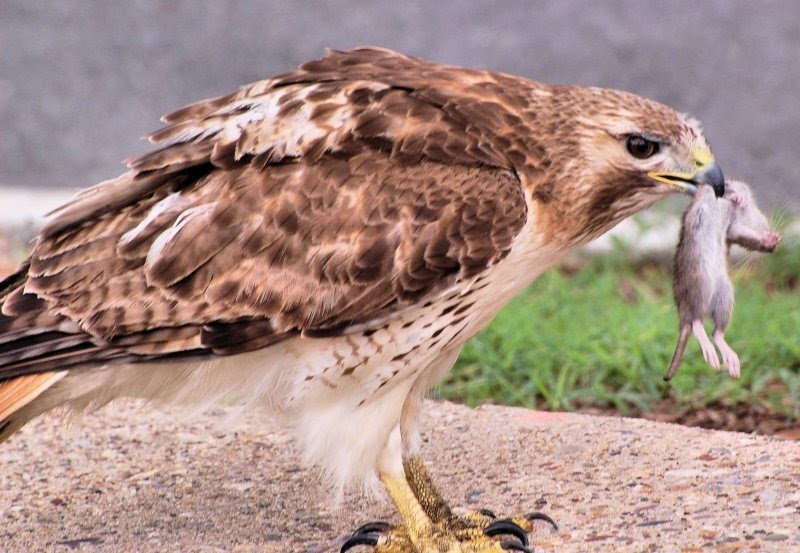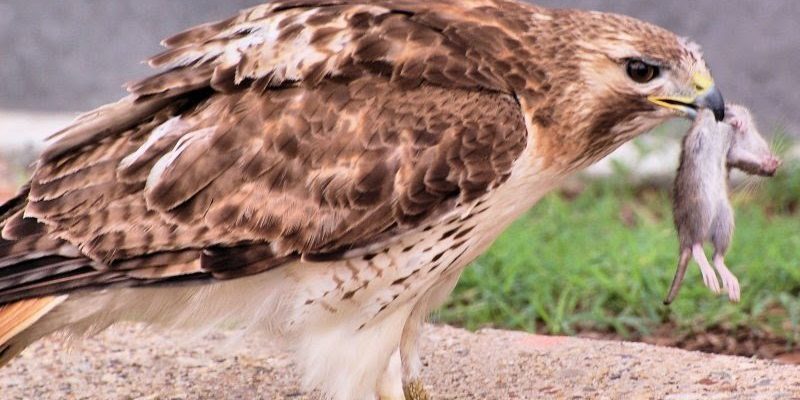
Imagine a hawk as a skilled chef in a natural kitchen, utilizing its keen senses and impressive skills to whip up a meal. From small rodents to other birds, these birds of prey have a diverse menu that varies based on their environment and species. Let’s dive into the fascinating world of hawk diets and their hunting techniques, and I’ll help you understand just how these remarkable hunters go about foraging for food.
What Do Hawks Eat?
Hawks are carnivorous birds, meaning they primarily eat meat. The specific diet of a hawk can depend on its species, habitat, and the availability of prey. Here are some common food items that make their way onto a hawk’s plate:
- Small Mammals: Many hawks, like the Red-tailed Hawk, enjoy a hearty meal of rodents such as mice, voles, and rabbits. These mammals are often abundant in fields and open areas.
- Birds: Hawks are known to hunt smaller birds as well. Songbirds, sparrows, and even pigeons can become a meal if the hawk is quick and stealthy.
- Reptiles: In some cases, hawks will also eat reptiles like snakes and lizards, adding another layer of variety to their diet.
- Insects: While not a primary food source, some hawks will snack on larger insects when the opportunity arises.
Hawks don’t just eat any available food—they have preferences based on their species. For example, the Cooper’s Hawk tends to favor birds, while the Ferruginous Hawk will go for larger mammals.
How Do Hawks Hunt?
Hawks are incredibly skilled hunters. Their methods can vary, but they generally rely on their sharp eyesight and impressive speed. Here’s how the magic happens:
1. Keen Vision: Hawks have exceptional eyesight, allowing them to spot prey from distances up to a mile away. This ability plays a huge role in their hunting success. Imagine having binoculars built into your eyes—now that’s a nifty tool for a hunter!
2. Hunting Techniques: There are several ways a hawk can hunt. Some prefer to sit on a high perch, scanning the ground below for movement. Others might engage in more active hunting, flying low and quickly, using stealth to surprise their prey.
3. Ambush Tactics: Hawks often employ ambush tactics. They’ll wait patiently, blending into their surroundings, before making a sudden swoop. This element of surprise is a game-changer when it comes to catching a meal.
Hunting, for a hawk, is more than just chasing down lunch—it’s about strategy, patience, and skill.
The Role of Habitat in Hunting
The environment where a hawk lives impacts its hunting success and diet. Let’s break down how different areas influence what and how they hunt:
– Open Fields: Hawks in open areas often hunt for small mammals. With fewer obstacles, they can easily spot and pursue their prey. The fields serve as an excellent hunting ground, especially in late spring when rodents are abundant.
– Forested Areas: In wooded regions, hawks may focus on birds and small mammals that inhabit those areas. Their hunting technique often involves using the trees for cover to ambush unsuspecting prey.
– Urban Areas: Believe it or not, some hawks have adapted to city life! Urban hawks often feast on pigeons and other birds that thrive in city environments. These birds have learned to navigate the hustle and bustle while keeping their hunting skills sharp.
Different habitats offer diverse hunting challenges and opportunities, making each hawk’s experience unique.
How Hawks Use Their Talons
Once a hawk spots its prey, it needs to act quickly, and that’s where its talons come in. These powerful tools are crucial for successful hunting:
– Strong and Sharp: A hawk’s talons are designed to grip and hold onto their prey. They can exert impressive strength, ensuring that once they catch something, it won’t escape easily.
– Killing Technique: When a hawk catches its meal, it often uses its talons to quickly immobilize or kill prey. For small rodents, a swift squeeze is usually sufficient to ensure it can’t wriggle free.
– Feeding: After the hunt, hawks often tear their food apart using their beaks and talons. This allows them to eat efficiently and helps them consume every bit of nourishment from their catch.
Talons are more than just weapons—they’re essential for survival, enabling hawks to hunt effectively and feed themselves.
Seasonal Changes in Diet
Hawks also adjust their diets based on the seasons. As the environment changes, so do their food sources. Here’s how that works:
– Spring and Summer: During these warmer months, you’ll often see hawks hunting small mammals and birds, which are abundant during the breeding season. Fresh nests mean tasty meals for hungry hawk families.
– Fall: As the weather turns, migration patterns affect food availability. Some hawks might shift to hunting different types of prey, such as larger insects or even more daring targets like snakes.
– Winter: In the colder months, food can become scarce. Hawks are adaptable and may extend their range or change their hunting strategies to find food. They might rely more on cached food or hunt for whatever small mammals they can find beneath the snow.
This seasonal adaptability is a testament to a hawk’s survival instincts.
The Importance of Hunting Skills
A hawk’s ability to hunt is crucial for its survival, not only for feeding itself, but also for raising its young. Let’s explore why hunting skills matter:
– Feeding Chicks: When hawks are caring for chicks, they need to bring back enough food to support their growing young. Successful hunting means the difference between life and death for the next generation.
– Territorial Defense: Hunting is also tied to territory. Hawks defend their hunting grounds from others, ensuring they have adequate food supply. The more skilled a hawk is at hunting, the better its chances of maintaining its territory.
– Survival: Lastly, effective hunting skills are vital for personal survival. Without access to food, hawks cannot thrive, and their populations will decline.
When you think about it, hunting skills are the heartbeat of a hawk’s existence, influencing everything from family life to territorial behavior.
Understanding what hawks eat and how they hunt opens up a window into the complex lives of these fascinating birds. From their sharp vision to their powerful talons, every aspect of a hawk’s hunting strategy is finely tuned for survival. Whether they’re soaring over open fields or weaving through forests, hawks are masterful hunters that play a critical role in their ecosystems.
So next time you spot one of these majestic birds, take a moment to appreciate the intricate dance of life happening right before your eyes. They’re not just flying around—they’re hunting, foraging, and embodying nature’s perfection.

